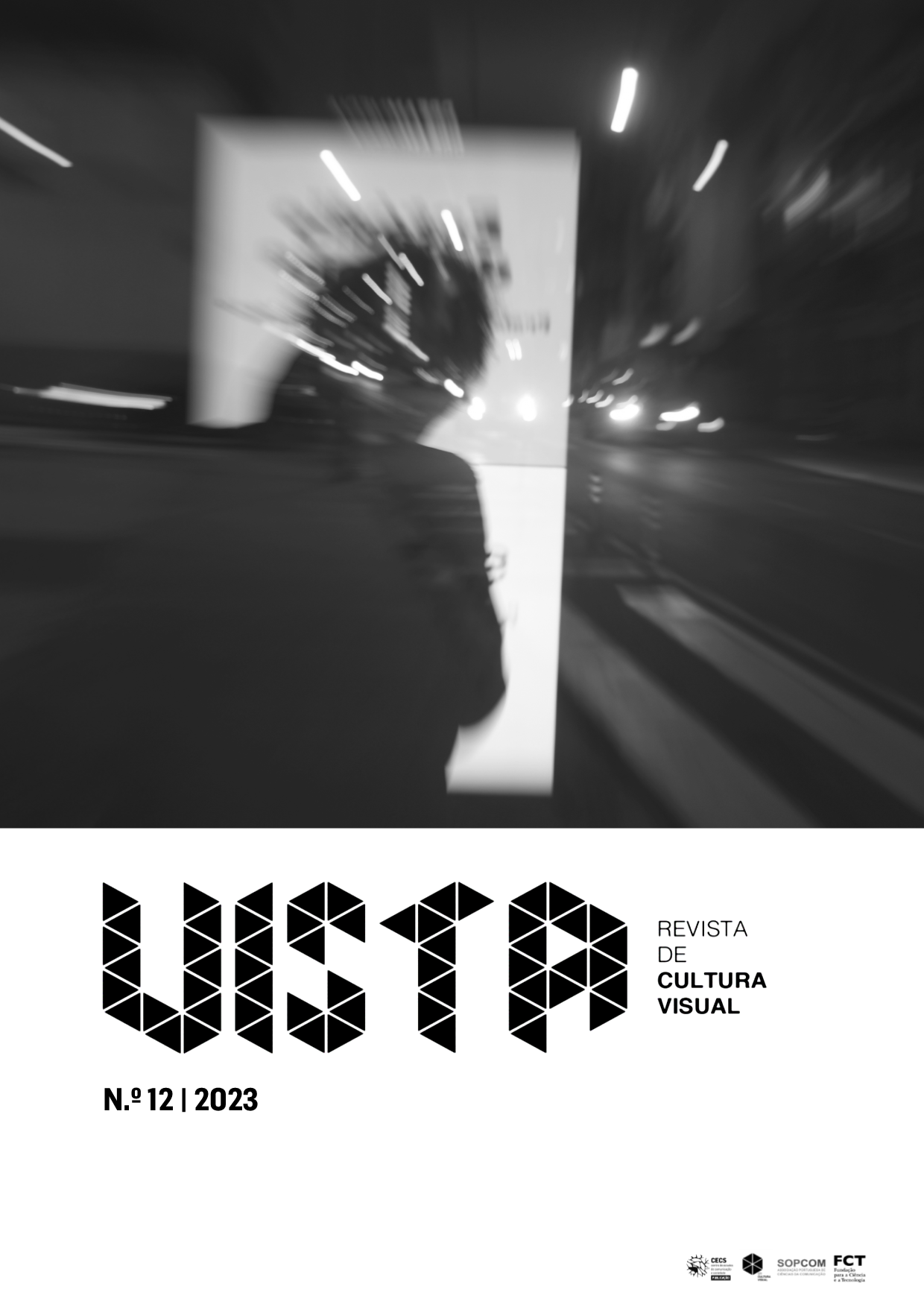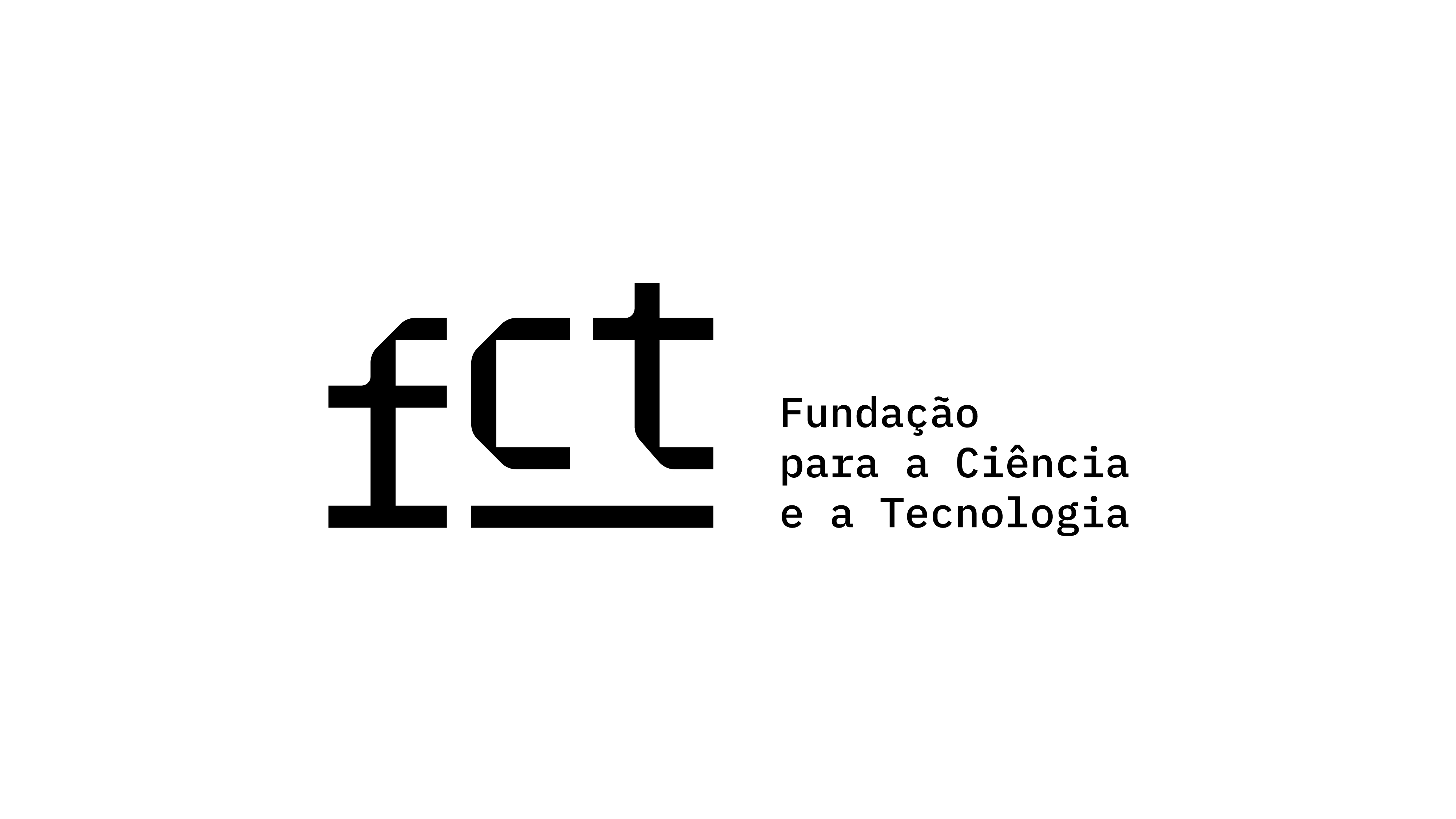Visualização da Marca: Metamorfose da Publicidade, Estratégias Visuais e o Seu Significado Cultural
DOI:
https://doi.org/10.21814/vista.4891Palavras-chave:
publicidade, cultura visual, semiótica, estética, imagensResumo
O tema do presente trabalho de investigação é a relação complexa entre a publicidade e a cultura visual. Este estudo demonstra a influência significativa da cultura visual na publicidade e vice-versa, investigando a história, os fundamentos teóricos e as práticas modernas da publicidade. Também oferece interpretações importantes sobre a natureza variada da publicidade e do seu papel na influência da cultura visual atual, através de uma análise exaustiva de estudos de caso e da literatura académica. Abrangendo desde as raízes históricas até aos paradigmas contemporâneos, este artigo percorre a trajetória evolutiva da publicidade, elucidando a sua associação simbiótica com a cultura visual. A exploração engloba uma série de ferramentas visuais utilizadas pelos agentes publicitários — desde imagens, símbolos, estética e semiótica —, destacando a sua utilização estratégica para envolver as audiências e manipular as perceções culturais. A análise das questões morais da utilização da persuasão da comunicação visual na publicidade está no centro deste estudo. Esta investigação examina as ramificações éticas e os efeitos sociais da persuasão visual, fornecendo uma avaliação crítica da sua influência na formação da consciência coletiva. Utilizando uma vasta gama de trabalhos académicos e estudos de caso, este estudo lança luz sobre a paisagem em constante mudança da publicidade. Examina cuidadosamente os casos em que as campanhas publicitárias deixaram uma impressão duradoura na cultura visual, iluminando o impacto significativo que estes meios de comunicação têm na sociedade moderna. Essencialmente, esta obra desvenda a complexa relação entre a publicidade e a cultura visual, atuando como um depósito de informação e proporciona um conhecimento mais profundo da forma como a publicidade molda e é moldada pelo mundo visual dos nossos tempos, lançando as bases para a compreensão da sua complexa dinâmica.
Downloads
Referências
Åkestam, N., Rosengren, S., Dahlén, M., Liljedal, K. T., & Berg, H. (2021). Gender stereotypes in advertising have negative cross-gender effects. European Journal of Marketing, 55(13), 63–93. https://doi.org/10.1108/EJM-02-2019-0125 DOI: https://doi.org/10.1108/EJM-02-2019-0125
Alim, M. M., & Rahim, R. S. A. (2021). Visual rhetoric in visual communication: Theory and concepts in public service announcements advertising campaign. International Journal of Academic Research in Business and Social Sciences, 11(6), 765–777. DOI: https://doi.org/10.6007/IJARBSS/v11-i9/11066
Anbumalar, S., Vignesh, C., Dharani, V. S., & Abarna, M. (2019). Effectiveness of online advertising in India. International Journal of Innovative Technology and Exploring Engineering, 8(12S), 577–579. DOI: https://doi.org/10.35940/ijitee.L1142.10812S19
Appel, G., Grewal, L., Hadi, R., & Stephen, A. T. (2020). The future of social media in marketing. Journal of the Academy of Marketing science, 48(1), 79–95. https://doi.org/10.1007/s11747-019-00695-1 DOI: https://doi.org/10.1007/s11747-019-00695-1
Babkina, V. (2023). What girls are made of? A critical overview of gender stereotyping in advertising and research-based recommendations for stakeholders [Master’s thesis, KTH Royal Institute of Technology].
Beig, F. A., & Nika, F. A. (2019). Brand experience and brand equity. Vision, 23(4), 410–417. https://doi.org/10.1177/0972262919860963 DOI: https://doi.org/10.1177/0972262919860963
Bhasin, H. (2023, June 10). History of advertising: Definition and complete timeline. Martketing91. https://www.marketing91.com/history-of-advertising/
Brandt, L. (2016). The rhetorics of fictive interaction in advertising: The case for imagined direct speech in argumentation. Cognitive Semiotics, 9(2), 149–182. DOI: https://doi.org/10.1515/cogsem-2016-0006
Bulmer, S., & Buchanan-Oliver, M. (2006). Visual rhetoric and global advertising imagery. Journal of Marketing Communications, 12(1), 49–61. https://doi.org/10.1080/13527260500289142 DOI: https://doi.org/10.1080/13527260500289142
Çakir, F., Çakir, M., & Solak, S. (2018). The effect of using mascot on products and services to remind the brand. In Research and development on social science: European conference on social and behavioral sciences (pp. 155–162). International Association of Social Science Research.
Codella, D. (2021, April 6). The winning Coca-Cola formula for a successful campaign. Wrike. https://www.wrike.com/blog/winning-coca-cola-formula-successful-campaign/
Dean, J. (2019). Sorted for memes and gifs: Visual media and everyday digital politics. Political Studies Review, 17(3), 255–266. https://doi.org/10.1177/1478929918807483 DOI: https://doi.org/10.1177/1478929918807483
Dove US. (2013, April 14). Dove real beauty sketches | You’re more beautiful than you think (3mins) [Video]. YouTube. https://www.youtube.com/watch?v=XpaOjMXyJGk
Dzyabura, D., & Peres, R. (2021). Visual elicitation of brand perception. Journal of Marketing, 85(4), 44–66. https://doi.org/10.1177/0022242921996661 DOI: https://doi.org/10.1177/0022242921996661
Elfving-Hwang, J. (2021). Media, cosmetic surgery and aspirational beauty aesthetics of the ageing body in South Korea. Asian Studies Review, 45(2), 238–252. https://doi.org/10.1080/10357823.2020.1736513 DOI: https://doi.org/10.1080/10357823.2020.1736513
Faizan, M. (2019). The role of semiotics in advertising: Communicative approach. Language in India, 19(2), 135–142.
Feenstra, R. A., & González Esteban, E. (2019). Autocontrol: A critical study of achievements and challenges in the pursuit of ethical advertising through an advertising self-regulation system. Journal of Business Ethics, 154, 341–354. DOI: https://doi.org/10.1007/s10551-016-3423-0
Goransson, K., & Fagerholm, A. S. (2018). Towards visual strategic communications: An innovative interdisciplinary perspective on visual dimensions within the strategic communications field. Journal of Communication Management, 22(1), 46–66. https://doi.org/10.1108/JCOM-12-2016-0098 DOI: https://doi.org/10.1108/JCOM-12-2016-0098
Graan, A. (2016). The nation brand regime: Nation branding and the semiotic regimentation of public communication in contemporary Macedonia. Signs and Society, 4(S1), S70–S105. https://doi.org/10.1086/684613 DOI: https://doi.org/10.1086/684613
Guibourgé, J. (2022). Semiotics applied to advertisements. HAL Open Science. (Original work published 2020)
Guruge, M. C. (2018). Comparison between attributes related to celebrity endorsement and social media influencer marketing: A conceptual review. Sri Lanka Journal of Marketing, 4(1), 17–37.
Harris, I. L. (2015, November 25). Dove empowered women and found success in 80+ countries. ReferralCandy. https://www.referralcandy.com/blog/dove-marketing-strategy
Jandrić, P., & Lacković, N. (2018). Visual cultures and education. In M. Peters (Ed.), Encyclopedia of Educational Philosophy and Theory (pp. 1–6). https://doi.org/10.1007/978-981-287-532-7_677-1 DOI: https://doi.org/10.1007/978-981-287-532-7_677-1
Jordan, L. (2020). Techniques of visual persuasion: Create powerful images that motivate. New Riders.
Kaput, M. (2022, March 10). AI in advertising: Everything you need to know. Marketing Artificial Intelligence Institute. https://www.marketingaiinstitute.com/blog/ai-in-advertising
Leong, N. (2021). Identity capitalists: The powerful insiders who exploit diversity to maintain inequality. Stanford University Press. DOI: https://doi.org/10.1515/9781503614277
Lu, M., Wang, C., Lanir, J., Zhao, N., Pfister, H., Cohen-Or, D., & Huang, H. (2020). Exploring visual information flows in infographics. In Proceedings of the 2020 CHI conference on human factors in computing systems (pp. 1–12). Association for Computing Machinery. DOI: https://doi.org/10.1145/3313831.3376263
Luo, B., Sun, Y., Shen, J., & Xia, L. (2020). How does green advertising skepticism on social media affect consumer intention to purchase green products? Journal of Consumer Behaviour, 19(4), 371–381. https://doi.org/10.1002/cb.1818 DOI: https://doi.org/10.1002/cb.1818
Noggle, R. (2018). The ethics of manipulation. Stanford Encyclopedia of Philosophy. https://plato.stanford.edu/entries/ethics-manipulation/
Panjrath, M. Y., & Tiwari, S. (2021). “Why them, not me?”: A study exploring the impact of following fashion influencers on instagram on body image satisfaction of adolescent girls and middle-aged women. International Journal of Psychosocial Rehabilitation, 25(2), 375–386. https://doi.org/10.37200/V25I2/37897
Peterson, M. O. (2019). Aspects of visual metaphor: An operational typology of visual rhetoric for research in advertising. International Journal of Advertising, 38(1), 67–96. https://doi.org/10.1080/02650487.2018.1447760 DOI: https://doi.org/10.1080/02650487.2018.1447760
Pettersson, R. (2020). Using images. Institute for Infology.
Piotr, H. (2013, September 30). Apple - Think different - Full version [Video]. YouTube. https://www.youtube.com/watch?v=5sMBhDv4sik
Reese, G., Rosenmann, A., & Cameron, J. E. (2019). The psychology of globalization: Identity, ideology, and action. Academic Press.
Schifferstein, H. N., Lemke, M., & de Boer, A. (2022). An exploratory study using graphic design to communicate consumer benefits on food packaging. Food Quality and Preference, 97, Article 104458. https://doi.org/10.1016/j.foodqual.2021.104458 DOI: https://doi.org/10.1016/j.foodqual.2021.104458
Shammout, E., D'Alessandro, S., Small, F., & Nayeem, T. (2022). Lifting the curtain on cultural values, materialism and luxury consumption: Evidence from Jordan. Journal of Consumer Behaviour, 21(5), 987–1001. https://doi.org/10.1002/cb.2053 DOI: https://doi.org/10.1002/cb.2053
Shaouf, A. (2018). Revising the effects of online advertising attributes on consumer processing and response. International Journal of Marketing Studies, 10(1), 39–53. https://doi.org/10.5539/ijms.v10n1p39 DOI: https://doi.org/10.5539/ijms.v10n1p39
Sundaram, R., Sharma, D. R., & Shakya, D. A. (2020). Power of digital marketing in building brands: A review of social media advertisement. International Journal of Management, 11(4), 244–254.
The Coca-Cola Co. (2014, June 10). Share a coke [Video]. YouTube. https://www.youtube.com/watch?v=4JmKVXgAFNA
Torresi, I. (2020). Translating promotional and advertising texts. Routledge. DOI: https://doi.org/10.4324/9781003131595
Vergura, D. T., & Luceri, B. (2018). Product packaging and consumers’ emotional response. Does spatial representation influence product evaluation and choice? Journal of Consumer Marketing, 35(2), 218–227. https://doi.org/10.1108/JCM-12-2016-2021 DOI: https://doi.org/10.1108/JCM-12-2016-2021
Vrontis, D., Makrides, A., Christofi, M., & Thrassou, A. (2021). Social media influencer marketing: A systematic review, integrative framework and future research agenda. International Journal of Consumer Studies, 45(4), 617–644. https://doi.org/10.1111/ijcs.12647 DOI: https://doi.org/10.1111/ijcs.12647
Wedel, M., Bigné, E., & Zhang, J. (2020). Virtual and augmented reality: Advancing research in consumer marketing. International Journal of Research in Marketing, 37(3), 443–465. https://doi.org/10.1016/j.ijresmar.2020.04.004 DOI: https://doi.org/10.1016/j.ijresmar.2020.04.004
What is influencer marketing? (2023, April 10). McKinsey & Company. https://www.mckinsey.com/featured-insights/mckinsey-explainers/what-is-influencer-marketing
Wiid, R., Müllern, T., & Berndt, A. (2023). The face of nonbinary beauty communication on Instagram: A content analysis. Journal of Current Issues & Research in Advertising, 44(1), 1–23. https://doi.org/10.1080/10641734.2022.2089786 DOI: https://doi.org/10.1080/10641734.2022.2089786
Downloads
Publicado
Como Citar
Edição
Secção
Licença
Direitos de Autor (c) 2023 Sushantika Chatterjee, Tasha Singh Parihar

Este trabalho encontra-se publicado com a Licença Internacional Creative Commons Atribuição 4.0.
Os autores são titulares dos direitos de autor, concedendo à revista o direito de primeira publicação. O trabalho é licenciado com uma Licença Creative Commons - Atribuição 4.0 Internacional.












